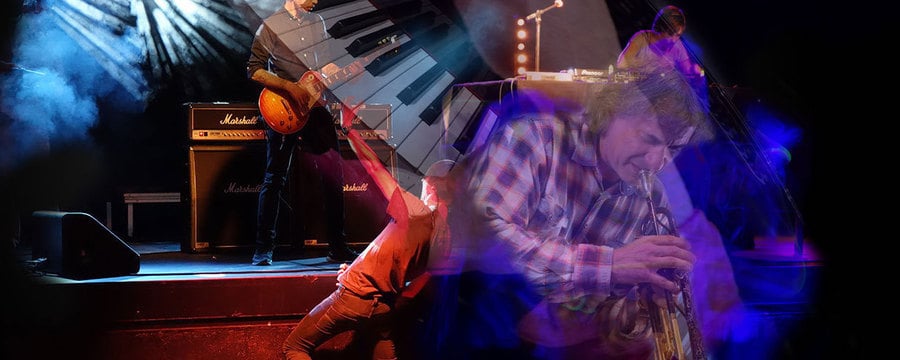Musical Experience: History of Listening in the 20th Century
The connection between music and body movement seems immediately obvious already in light of how musical sound is made. Body movements produce sounds on instruments, and very few musicians are able to play properly without a repertoire of other types of movements: the jazz pianist might keep time through foot tapping, while the classical clarinettist might embody the melodic phrases through phrasing “dips” in the head and shoulders.
Similar types of connections between sound and movement are also apparent in the perception of music. In dance music, for example, the body responds to specific features in the music – of choreographed classical ballet, stylized folk dance, and improvised club dance. But perceiver’s movements are not only restricted to dancers. As Simon Frith writes,
A good rock concert . . . is measured by the audience’s physical response, by how quickly people get out of their seats (1996:124).
A social proscription against overt movement by listeners has long been in effect (1995:64).
To sneer at people who showed their emotions at a play or concert became de rigueur by the mid-19th century. Restraint of emotion in the theater became a way for middle-class audiences to mark the line between themselves and the working class. A “respectable” audience by the 1850s was an audience that could control its feelings through silence; the old spontaneity was called “primitive.” The Beau Brummell ideal of restraint in bodily appearance was being matched by a new ideal of respectable noiselessness in public (1974:206).
any fusion between music and mundane social activities which are felt to violate the integrity of musical experience (Weber 1997:681).
- always play complete symphonies, never parts
- never applaud between parts/movements
- never applaud until the last note is played
Just in the middle of the first Allegro there was a passage which I felt sure must please. The audience were quite carried away – and there was a tremendous burst of applause. But as I knew, when I wrote it, what effect it would surely produce (quoted in Anderson 1966:558).
Music is understood by this tradition as being problematic in its capacity to affect us in ways which seem to bypass the acceptable channels of language, reason and contemplation. In particular, it is music’s apparent physicality, its status as a source of physical pleasure, which is problematic. By the same token, this tradition tends to demand of music that it – as far as possible – be meaningful, that even where it does not have words, it should offer itself up as an object of intellectual contemplation such as is likely to generate much meaningful discourse. Even those forms of modernist music which have aspired to pure abstraction (in particular the tradition of serial music), have been written with an emphasis on complexity and a deliberate intellectualism which foregrounds the music’s status as objects of rational contemplation rather than as a source of physical pleasure (1999:42–43).
structural listening highlights an intellectual response to music to the almost total exclusion of human physical presence – whether that of the performer or that of the listener (2004:8).
But as we argue, even if we try to avoid the body in music, it is still there, and it still influences our experience of music.
References
- Adorno, Theodor W. 1968. Einleitung in die Musiksoziologie: Zwölf theoretische Vorlesungen. Hamburg: Rowohlt.
- Anderson, Emily. 1966. The Letters of Mozart and his Family. Chronologically Arranged, Translated and Edited with an Introduction, Notes and Indexes. Vol. II. New York: St Martin’s Press.
- Dell’Antonio, Andrew, ed. 2004. Beyond Structural Listening?: Postmodern Modes of Hearing. Berkeley: University of California Press.
- Frith, Simon. 1996. Performing Rites: Evaluating Popular Music. Oxford: Oxford University Press.
- Gilbert, Jeremy, and Ewan Pearson. 1999. Discographies: Dance Music Culture, and the Politics of Sound. London: Routledge.
- Goehr, Lydia. 1992. The Imaginary Museum of Musical Works: An Essay in the Philosophy of Music. Oxford: Clarendon Press.
- Johnson, James H. 1995. Listening in Paris: A Cultural History. Berkeley: University of California Press.
- McClary, Susan. 2000. Conventional Wisdom. The Content of Musical Form. Berkeley: University of California Press.
- Sennett, Richard. 1974. The Fall of Public Man. New York: W. W. Norton & Company.
- Shove, Patrick, and Bruno H. Repp. 1995. Musical Motion and Performance: Theoretical and Empirical Perspectives. In The Practice of Performance: Studies in Musical Interpretation, edited by J. Rink. Cambridge: Cambridge University Press: 55–83.
- Weber, William. 1997. Did People Listen in the 18th Century? In Early Music XXV (4): 678–691.
Music Moves: Why Does Music Make You Move?


Reach your personal and professional goals
Unlock access to hundreds of expert online courses and degrees from top universities and educators to gain accredited qualifications and professional CV-building certificates.
Join over 18 million learners to launch, switch or build upon your career, all at your own pace, across a wide range of topic areas.
Register to receive updates
-
Create an account to receive our newsletter, course recommendations and promotions.
Register for free







